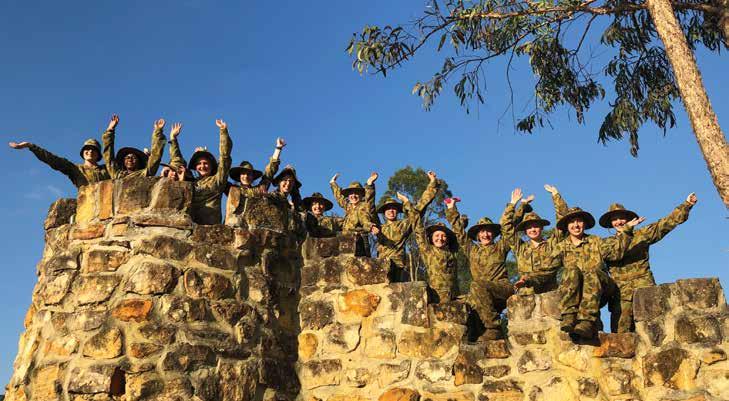APPLIED LEARNING True North: Setting your bearings with surveying By Bryan Morrison, Mathematics Teacher
This article explains the emergence and evolution of one of the Pymble Mathematics Department’s most iconic assessment tasks – the surveying task. This learning activity was designed by Bryan Morrison and Miriam Tenney more than 15 years ago and is still engaging our students in a very practical way in abstract mathematical concepts. Many Pymble students and staff have witnessed Bryan and colleagues over the years as they have set up and conducted the task with students on Lang Lawn with clipboards, compasses, iPads and calculators in hand. In 2019, the Mathematics Department worked together in Reflect-ReviewRenew Professional Learning time on the topic of assessment and used the surveying task to look at ways to continue enhancing the learning experiences of our students.
THE SURVEYING ASSESSMENT Miriam Tenney and I started forming the task in 2004 in anticipation of using it as a Year 12 assessment. The task comprised two parts; a rightangled Trigonometry problem (where students calculated the height of a flag on the flagpole, the drop of some blinds on the Colonnade Building or calculating the height of the Chapel spire), followed by a non-right-angled problem, involving a radial survey of an area set in probable scenarios (such as returfing a lawn, making a carpark or a helicopter pad). Following a Board of Studies (BOS) directive to develop different styles of assessment, our task was expanded to encompass the ideas of teamwork, practical application of the curriculum and outdoor mathematics. We decided that instruction would take place in the outdoors environment where students would learn to use the theodolite, tape measures and
www.pymblelc.nsw.edu.au
compasses in order to make the necessary measurements to apply to trigonometric problems. The girls would be broken randomly into teams of four to make the measurements at two to three stations which would be recorded into a field book. Upon completion of the recording of the measurements, the students would proceed to the classroom where they would complete questions and problems based on the outdoor The teamwork approached encouraged the girls to work and co-operate with different students and share their knowledge and acquired skills to get the correct measurements.”
stations. Miriam and I found that over the years, despite the simplicity of our equipment, students consistently attained a high degree of accuracy within the limits of error set for the task.
USING THE COLLEGE ENVIRONMENT We set the stations for this assessment within the confines of the College campus. Initially, we picked basic locations (the flagpole and the Marden Lawn) for our stations. Control of the process required that the stations were not too far apart which assisted with a smooth flow of students between each station and the examination room. Over the years, we developed more ideas for problems to solve and consequently moved to the Main Oval and used other sites such as the Chapel, Lang and Marden Lawns, the Colonnade Building and the Kate Mason Building.
Illuminate RESEARCH AND INNOVATION | 25













